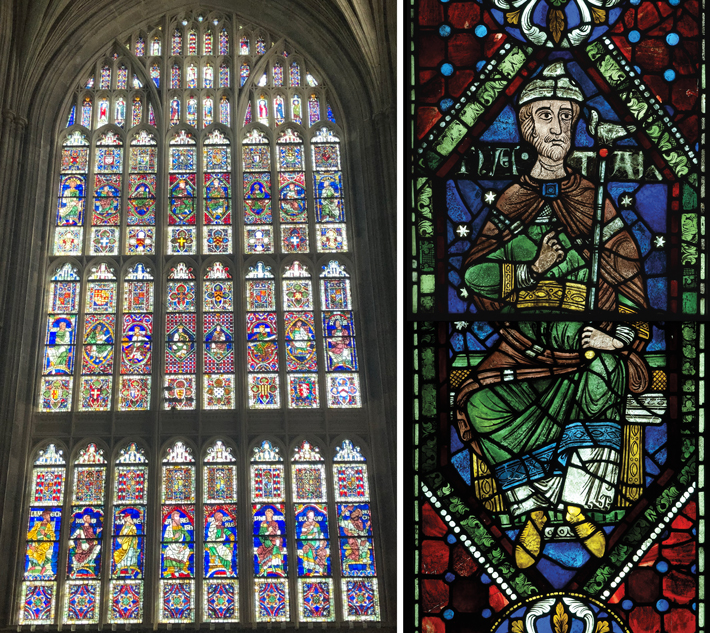The Age of Glass
November/December 2021
 Among Canterbury Cathedral’s architectural wonders are its ornate, centuries-old stained glass windows. It is now clear that some of the windows are even older than originally thought. In the thirteenth century, 86 panels, each depicting an ancestor of Christ—known as the “ancestor series”—were installed along the cathedral’s clerestory as part of a major restoration after an 1174 fire. Experts noticed decades ago that four of those panels appeared to be of an earlier style. It is notoriously difficult to date stained glass since doing so normally requires the windows to be dismantled. Using a portable X-ray fluorescence machine equipped with a specially designed attachment, a team from University College London was finally able to date the glass panels by analyzing their chemical signatures. “This study was the first real test of this in situ methodology that we developed for medieval stained glass,” says archaeologist Laura Ware Adlington, “and the success we’ve experienced far exceeds our expectations.”
Among Canterbury Cathedral’s architectural wonders are its ornate, centuries-old stained glass windows. It is now clear that some of the windows are even older than originally thought. In the thirteenth century, 86 panels, each depicting an ancestor of Christ—known as the “ancestor series”—were installed along the cathedral’s clerestory as part of a major restoration after an 1174 fire. Experts noticed decades ago that four of those panels appeared to be of an earlier style. It is notoriously difficult to date stained glass since doing so normally requires the windows to be dismantled. Using a portable X-ray fluorescence machine equipped with a specially designed attachment, a team from University College London was finally able to date the glass panels by analyzing their chemical signatures. “This study was the first real test of this in situ methodology that we developed for medieval stained glass,” says archaeologist Laura Ware Adlington, “and the success we’ve experienced far exceeds our expectations.”
The team determined that the panel showing the prophet Nathan, and likely those showing three others, are significantly older than the rest. They date to the 1130s, and are among the oldest stained glass windows in the world. The researchers believe that these early glass panels were originally located in the cathedral’s choir and survived the fire. Almost a century later, they were incorporated into the ancestor series. “Of course, we can’t help but get excited by words like ‘oldest’ and ‘earliest,’ but it is more than that,” says Adlington. “In this case, the windows are survivors of a fire, relics of a former cathedral that is no longer there, but which has left clues behind about its appearance.”